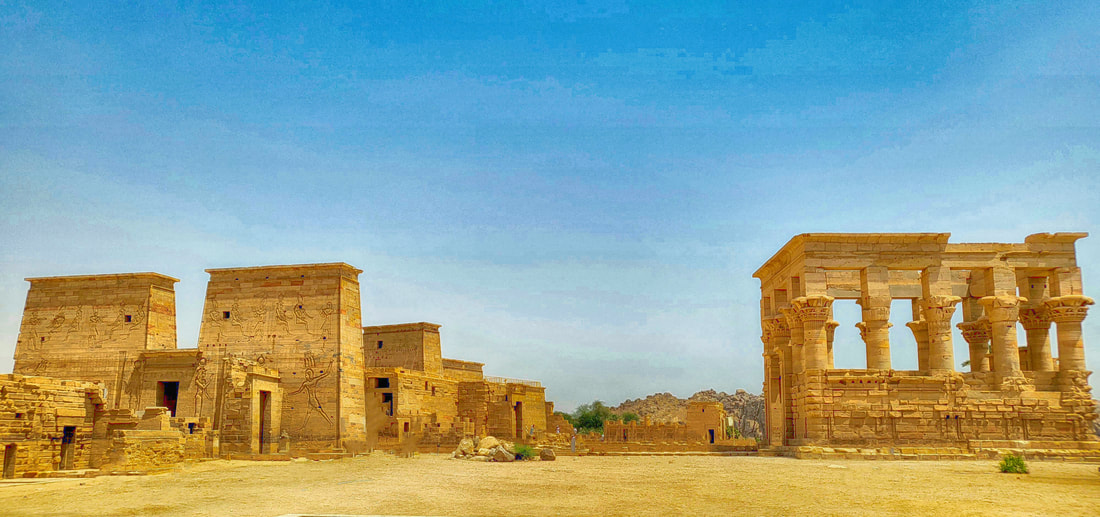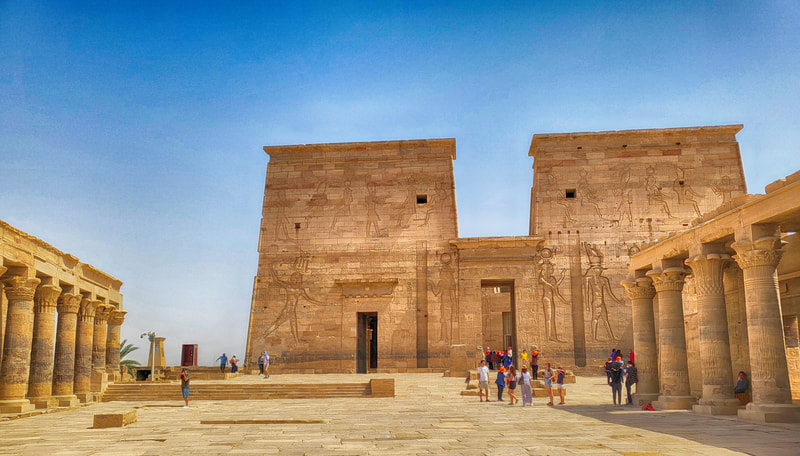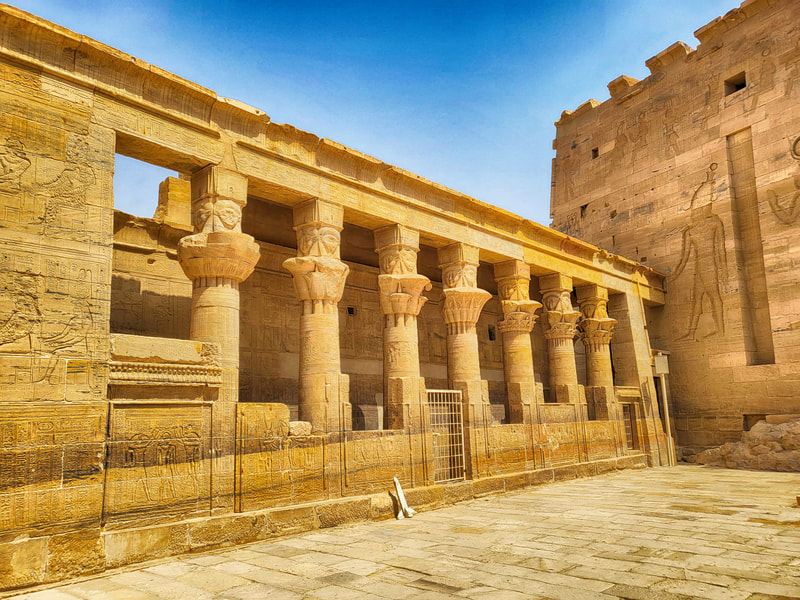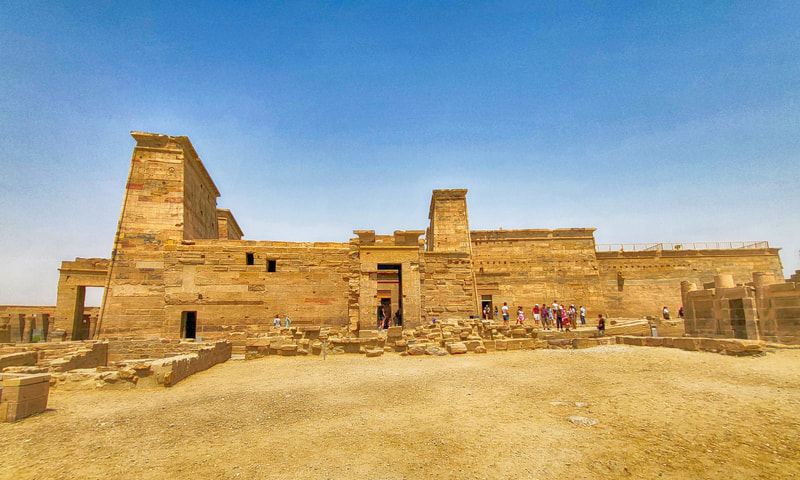|
The Philae Temple Complex was originally located on Philae Island, which had become flooded since the construction of the Aswan Low Dam in 1902. Between 1960 and 1980, the temple complex was dismantled and moved to its current location on nearby Agilkia Island and completely rebuilt in its current re-construction today.
Philae Island was believed to be one of the burial places of the God Osiris. It was considered sacred to his wife, Isis, and remains of temples date back to the 6th century BC. The oldest remaining and largest construction today is the Temple of Isis, built in the reign of Nectanebo I during 380-362 BC of the 30th Dynasty - the last of the native dynasty Egyptian Pharaohs. During ancient times, in front of the Temple, were two granite lions, behind which stood a pair of obelisks, 13 metres (43 ft) high. Two monolithic shrine held the cages of Sacred Hawks - one of which is now in the Louvre, the other in the Florence Museum. Around 170 BC, the Priests on the islands petitioned the Ptolemaic Pharoah, Ptolemy VIII Physcon (170-117 BC) to prevent Pilgrims from visiting the islands and living there at the expense of the Priests. This petition was carved into the obelisk in both Egyptian hieroglyphics and Greek script. This caught the later attention of the Englishman in 1806, William John Banks, who brought a complete obelisk and the remains of the second one which was badly damaged, to England and had it erected in the grounds of Kingston Lacey, near Wimborne, Dorset. His contributions in translating the Egyptian hieroglyphs by comparison with the equivalent Greek writings contributed much to the understanding of the early Egyptian language. The temple complex was added to by Ptolemaic and Roman rulers up until the 3rd century AD with one addition still remaining - a large square pillared construction, the Kiosk of Trajan (AD 98-117). The islands continued attracting pilgrims following the Cult of Isis long after Christianity arrived in Egypt making it the last remaining place for the worshiping of Egyptian Gods/Goddesses. The temples were closed to all but Christians in AD 537 by orders of Justinian I, which led to much defacing of the temples by zealous Christian 'Iconoclasts' who sought to mutilate the ancient images of Egyptian Gods and Goddesses wall carvings. Today, arriving by boat at the island, begins with the oldest part of the remains, the Kiosk of Nectanebo. This leads to the 18 metre tall Pylon gateway decorated with reliefs of Ptolemy XII Neos Dionysos defeating his enemies. Others show Isis, Horus and Hathor. Passing through the gateway, the Temple forecourt is surrounded by pillared colonnades with various rooms, with one known as the Birth House which contains reliefs dedicated to Isis in honour of the birth of her son, Horus. This was an important part of ancient rituals performed by Pharaohs to celebrate the importance of Isis and to support their own claims of being a direct descendent of Horus, giving them legitimizing their divine right to rule. The second Pylon leads to the inner temple. Eight huge columns later carved with Coptic crosses show how the temple was 'converted' into a place of Christian Worship during the Byzantine period. Beyond the temple vestibule, is the sanctuary in which granite shrines once held a gold statue of Isis and the barque in which she travelled. These are held also in Paris and Florence.
0 Comments
Leave a Reply. |
Archives
June 2024
|
|
Paul is available for consultations to assist with activation and connection to higher dimensional aspects of Self, manifesting and understanding Life purpose events, establishing and maintaining higher expanded consciousness states of awareness.
|
|
|
Paul is available for consultations to assist with activation and connection to higher dimensional aspects of Self, manifesting and understanding Life purpose events, establishing and maintaining higher expanded consciousness states of awareness.
|
BOOK A CONSULTATION
|




















 RSS Feed
RSS Feed


